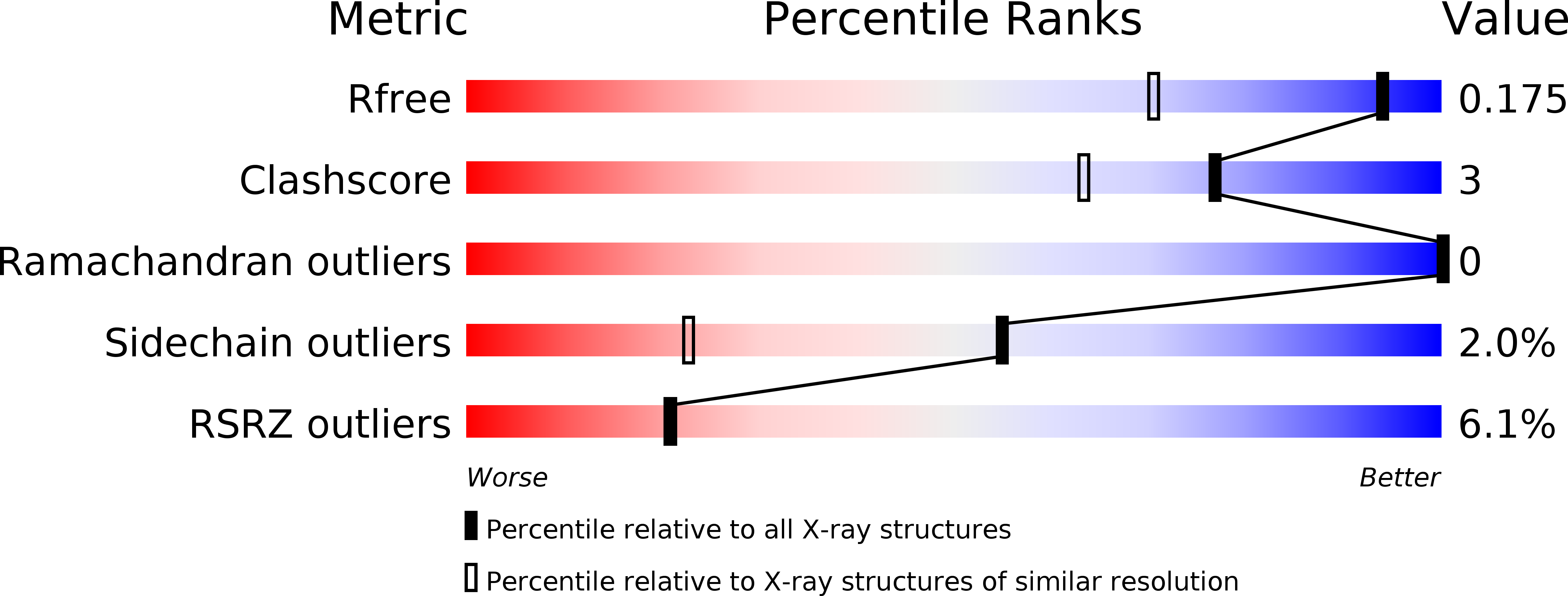A Noncanonical Chromophore Reveals Structural Rearrangements of the Light-Oxygen-Voltage Domain upon Photoactivation.
Kalvaitis, M.E., Johnson, L.A., Mart, R.J., Rizkallah, P., Allemann, R.K.(2019) Biochemistry 58: 2608-2616
- PubMed: 31082213
- DOI: https://doi.org/10.1021/acs.biochem.9b00255
- PubMed Abstract:
Light-oxygen-voltage (LOV) domains are increasingly used to engineer photoresponsive biological systems. While the photochemical cycle is well documented, the allosteric mechanism by which formation of a cysteinyl-flavin adduct leads to activation is unclear. Via replacement of flavin mononucleotide (FMN) with 5-deazaflavin mononucleotide (5dFMN) in the Aureochrome1a (Au1a) transcription factor from Ochromonas danica, a thermally stable cysteinyl-5dFMN adduct was generated. High-resolution crystal structures (<2 Å) under different illumination conditions with either FMN or 5dFMN chromophores reveal three conformations of the highly conserved glutamine 293. An allosteric hydrogen bond network linking the chromophore via Gln293 to the auxiliary A'α helix is observed. With FMN, a "flip" of the Gln293 side chain occurs between dark and lit states. 5dFMN cannot hydrogen bond through the C5 position and proved to be unable to support Au1a domain dimerization. Under blue light, the Gln293 side chain instead "swings" away in a conformation distal to the chromophore and not previously observed in existing LOV domain structures. Together, the multiple side chain conformations of Gln293 and functional analysis of 5dFMN provide new insight into the structural requirements for LOV domain activation.
Organizational Affiliation:
School of Chemistry , Cardiff University , Park Place , Cardiff CF10 3AT , United Kingdom.




















